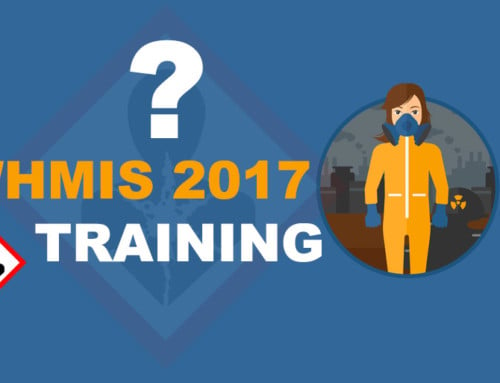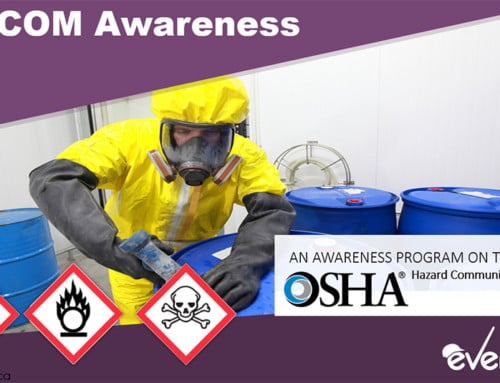Joint Health and Safety Committees: An Introduction
A Joint Health and Safety Committee (JHSC) is an advisory board that identifies health and safety issues within the workplace and recommends solutions. Made up of management and worker representatives, the JHSC is committed to improving health and safety conditions in the workplace. Members of the committee meet regularly to identify and discuss health and safety concerns, make recommendations to the employer, undertake follow-ups on the progress made on previous recommendations and designate members of the committee who should carry out workplace inspections and other specific tasks. The committee must also be kept informed by the employer on any health and safety developments.
By including both the representatives of the workers and the employers, the JHSC ensures that every possible action is taken to identify and mitigate or eliminate health and safety hazards, resulting in greater protection against workplace injuries, illnesses and deaths.
JHSC as an Internal Responsibility System
Also known as occupational health and safety committee (occupational health committee, joint work site health and safety committee, health and safety committee or workplace health and safety committee), the joint health and safety committee is a useful forum for bringing into practice an internal responsibility system. Since the committee consists of management and labor representatives, it brings both the worker and employer concerns to the discussion table on a regular basis and ensures that individuals responsible for specific health and safety tasks are held to account. A committee also helps to ensures that practical knowledge of specific employee duties is carefully matched to the company policies and procedures in order to achieve more productivity without jeopardizing worker health and safety.
Composition of Joint Health and Safety Committees
When developing a JHSC , every attempt should be made for the committee to be adequately representative of the entire workforce. For instance, if the workplace has an office, warehouse, plant and laboratory, the committee should be composed of representatives from each of these areas. Equally, at least half of JHSC members should be employees with no managerial functions so that when the employer or constructor selects the remaining members of the committee from persons exercising managerial functions on his/her behalf, then there is proper representation of the entire workforce.

Functions of the Joint Health and Safety Committee
The JHSC is an advisory team for stimulating and raising awareness on workplace health and safety issues. The members hold regular meetings and conduct frequent workplace inspections to identify workplace risks and develop recommendations for addressing those risks. The committee also investigates workplace accidents, analyzes workplace education and training programs and makes written recommendations to the employer on safety and health issues and on procedures and programs that can improve health and safety.
A JHSC helps employers to:
- Identify workplace hazards
- Assess potential risk for accidents, injuries and illnesses in the workplace
- Create and implement effective programs for promoting the health and safety of workers
- Make timely responses to worker complaints and suggestions regarding workplace safety and health
- Resolve work stoppages and refusals
- Evaluate the effectiveness of safety procedures and programs
- Create and promote worker education and training programs
- Monitor all hazard reports and recommend appropriate actions
- Promote accurate records on workplace hazards and injuries
- Make appropriate recommendations to the workplace on accident and injury prevention and on workplace safety activities
- Participate in health and safety investigations and inquiries
- Consult with technical and professional experts
A committee fulfills its responsibilities by:
- Holding regular meetings
- Developing guidelines to assist members in achieving committee goals
- Inspecting the workplace regularly
- Obtaining health and safety information from the employer
- Consulting the employer regularly on health and safety issues at the workplace
- Being consulted about health and safety-related workplace testing and designating a member to be present at the beginning of such tests
- Identifying potential and actual workplace hazards
- Investigating work refusals, work stoppages and serious accidents at the workplace
- Making written recommendations to the employer on appropriate health and safety improvements
Who is Responsible for Establishing the JHSC?
The establishment of workplace joint health and safety committees is the responsibility of employers. While most regulations on workplace health and safety provide clear guidelines on the structure, organization, meeting frequency and roles of JHSC members, it is the employers who establish the terms of reference for the formation, composition and functioning of such committees. Nevertheless, the terms of reference developed by the employers must ensure the widest possible worker involvement, compliance with the OHS legislation and the effectiveness of the established committee in meeting specific workplace health and safety needs.
Employer obligations regarding Joint Health and Safety Committees:
- Ensuring the establishment and smooth functioning of the committee at a workplace where the committee is required
- Selecting committee members exercising managerial functions
- Cooperating with and assisting the committee members in carrying out their duties effectively
- Availing relevant information on workplace hazards and on the best practices and standards required at the workplace
- Informing the committee of any work-related accidents which involve injury, occupational illness or death
- Allowing a member of the JHSC who represents the workers to accompany inspectors during physical inspection of the workplace
- Consulting with the JHSC on assessment and control procedures and programs for designated substances
- Consulting with the JHSC when developing or reviewing the education and training instruction/program for workers exposed to or are likely to be exposed to hazardous chemicals and physical agents
- Providing all the information that the committee has the mandate to obtain, including current safety data sheets, copies of assessment reports on biological and chemical agents, and information from suppliers on devices/products that emit hazardous agents
- Responding to committee recommendations in writing within a reasonable timeframe after receiving the recommendations, providing the implementation timetable for the JHSC report and including any reasons for disagreement with part or all of the committee recommendations
Provincial JHSC Resources
Alberta
Joint Work Site Health and Safety Committee Handbook
Manitoba
Workplace Safety and Health Program Committee Manual
New Brunswick
Joint Health and Safety Committees Booklet
Northwest Territories/Nunavut
Guidelines for Developing Effective Health and Safety Programs
Nova Scotia
Joint Occupational Health and Safety Committees:A Practical Guide for Single Employer Workplaces
Ontario
A Guide for JHSC’s and Representatives in the Workplace
Prince Edward Island
Guide to Workplace Health and Safety Committees
Saskatchewan
Occupational Health and Safety Committee Manual






